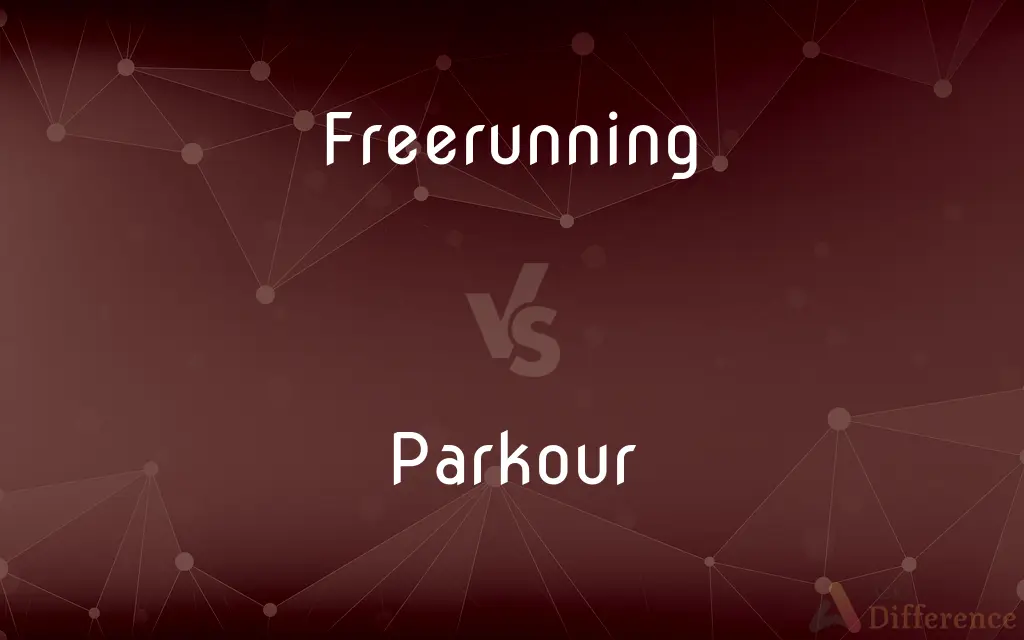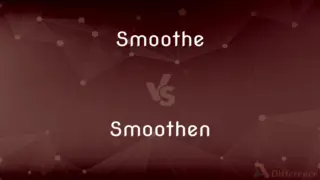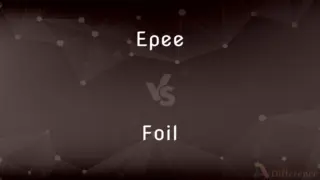Freerunning vs. Parkour — What's the Difference?
By Tayyaba Rehman — Updated on September 21, 2023
"Freerunning" emphasizes acrobatic movements and self-expression, while "Parkour" focuses on efficient movement from point A to B. Both involve navigating urban environments.

Difference Between Freerunning and Parkour
Table of Contents
ADVERTISEMENT
Key Differences
Freerunning" is a discipline that combines the basics of "Parkour" with a flair for acrobatics and self-expression. It's not just about getting from one location to another; it's about doing so with style and creativity.
The essence of "Parkour" lies in efficiency and utility. Practitioners, known as traceurs, prioritize the fastest and most direct path between two points, often overcoming obstacles in their way. In contrast, "Freerunning" might involve taking a longer route to showcase a series of flips or spins.
When observing someone engaged in "Freerunning," you're likely to see a blend of gymnastic feats interwoven with traditional "Parkour" movements. This blending prioritizes aesthetics and can be seen as a more artistic offshoot of Parkour.
At its core, "Parkour" is rooted in practicality. It originated as a training method for French military obstacle course training. "Freerunning," while incorporating many of the same principles, diverges in its emphasis on self-expression and spectacle.
In summary, while both "Freerunning" and "Parkour" involve navigating and interacting with the urban landscape, their philosophies diverge in terms of purpose. "Parkour" is about efficiency; "Freerunning" is about flair.
ADVERTISEMENT
Comparison Chart
Definition
Artistic and acrobatic way of navigating obstacles.
Efficient movement through obstacles from point A to B.
Primary Focus
Self-expression and creativity.
Speed and efficiency.
Origins
Evolved from Parkour with added flair and acrobatics.
French military training.
Key Movements
Flips, spins, and stylish leaps.
Vaults, climbs, and jumps.
Philosophy
Movement with artistic freedom.
Movement with practicality and efficiency.
Compare with Definitions
Freerunning
An urban acrobatic sport emphasizing style and creativity.
He showcased his skills in freerunning by adding a backflip off the wall.
Parkour
A discipline focusing on moving fluidly through a landscape.
Parkour training improved his ability to overcome physical barriers.
Freerunning
Parkour blended with gymnastics and self-expression.
While parkour gets you there faster, freerunning makes the journey a spectacle.
Parkour
The efficient and swift traversal of urban obstacles.
Using parkour, he quickly navigated the rooftop gaps.
Freerunning
Urban movement emphasizing artistry and spectacle.
Freerunning events draw crowds eager to see gravity-defying tricks.
Parkour
Overcoming obstacles using jumps, vaults, and climbs.
Parkour teaches you to see the city as a playground of opportunities.
Freerunning
Navigation of obstacles with a focus on aesthetics.
He chose freerunning to express himself, adding grace to each leap.
Parkour
Urban movement prioritizing speed and efficiency.
He used parkour techniques to reach the building's roof in seconds.
Freerunning
Movement through the environment with artistic flair.
Freerunning allows for individual style, evident in his unique spins.
Parkour
A training method originating from French military exercises.
Parkour's roots in military training emphasize its practicality.
Freerunning
Free Running (Freerun) is a way of expression by interacting with various obstacles and environment. Freerunning may include flipping and spinning.
Parkour
Parkour (French: [paʁkuʁ]) is a training discipline where practitioners (called traceurs) aim to get from one point to another in a complex environment, without assisting equipment and in the fastest and most efficient way possible. With roots in military obstacle course training and martial arts, parkour includes running, climbing, swinging, vaulting, jumping, plyometrics, rolling, and quadrupedal movement—whatever is suitable for the situation.Parkour is an activity that can be practiced alone or with others, and is usually carried out in urban spaces, though it can be done anywhere.
Freerunning
Alternative spelling of free running
Parkour
The activity or sport of moving rapidly through an area, typically in an urban environment, negotiating obstacles by running, jumping, and climbing.
Parkour
A sport or athletic activity in which the participant seeks to move quickly and fluidly through an area, often an urban locale, by surmounting obstacles such as walls and railings and leaping across open spaces, as in a stairwell or between buildings.
Parkour
(sport) An athletic discipline, in which practitioners traverse any environment in the most efficient way possible using their physical abilities, and which commonly involves running, jumping, vaulting, rolling, flipping, and other similar physical movements.
Parkour
To freerun; to use parkour (to move over).
Common Curiosities
Are there competitions for freerunning?
Yes, there are freerunning competitions showcasing style and creativity.
Is parkour safe for beginners?
With proper training and precautions, beginners can safely learn parkour basics.
Do you need special shoes for freerunning?
While there are shoes designed for freerunning, it's essential to prioritize grip and comfort.
Are there schools or gyms for freerunning?
Yes, many gyms and schools offer specialized training in freerunning techniques.
What is the philosophy behind parkour?
Parkour emphasizes fluidity, efficiency, and overcoming physical barriers.
Is freerunning the same as parkour?
No, freerunning emphasizes style and acrobatics, while parkour focuses on efficiency.
Can a practitioner do both freerunning and parkour?
Yes, many athletes combine elements of both in their movements.
Which came first, freerunning or parkour?
Parkour originated first, with freerunning evolving from it.
How did parkour become popular?
Parkour gained popularity through videos, movies, and its unique urban appeal.
Is freerunning more about self-expression?
Yes, freerunning prioritizes individual style and creativity in movement.
Share Your Discovery

Previous Comparison
Smoothe vs. Smoothen
Next Comparison
Epee vs. FoilAuthor Spotlight
Written by
Tayyaba RehmanTayyaba Rehman is a distinguished writer, currently serving as a primary contributor to askdifference.com. As a researcher in semantics and etymology, Tayyaba's passion for the complexity of languages and their distinctions has found a perfect home on the platform. Tayyaba delves into the intricacies of language, distinguishing between commonly confused words and phrases, thereby providing clarity for readers worldwide.














































